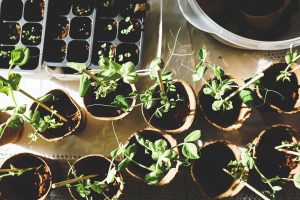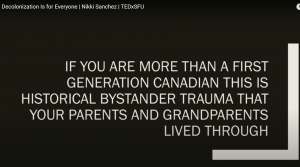The empoweringthespirit.ca resources developed by Alberta Regional Professional Development Consortia (ARPDC) organized information in such an accessible way. I found the categories were meaningful, sorted by Foundational Knowledge, Leading and Learning, and Classroom Supports.
On page 4 of the document shares inquiry questions and guiding information organized by 4 quadrants: Cultures of Belonging, Instructional Design, Pedagogy, and Sharing through Story.
The introduction shares that the resource could not have been made without the Collaborative Community of teachers from the Calgary Board of Education (CBE), and Elder Bruce Starlight of the Tsuut’ina Nation in Alberta but I would like to find more information on who was part of the design process. What was the process of creating these resources with consultation and support from First Nations, Metis and Inuit people?


